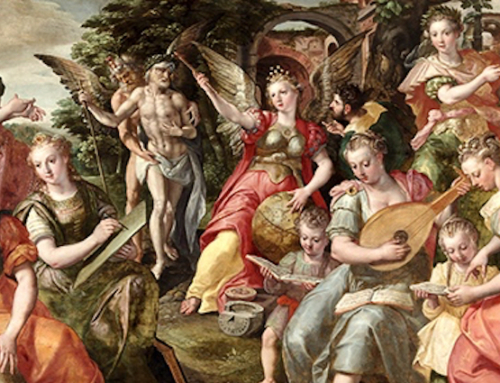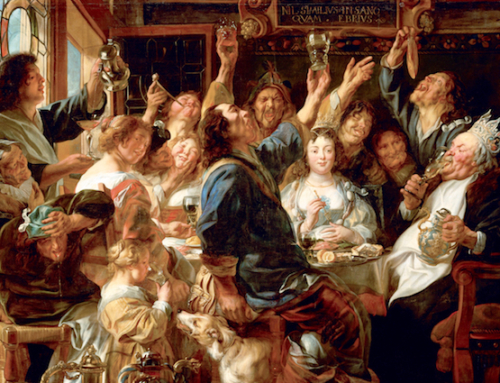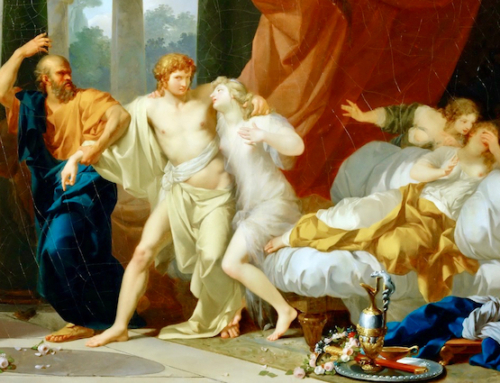
George Orwell
The pen was an archaic instrument, seldom used even for signatures, and he had procured one, furtively and with some difficulty simply because of a feeling that the beautiful creamy paper deserved to be written on with a real nib instead of being scratched with an ink-pencil. … He dipped the pen into the ink and then faltered for a second. … To mark the paper was a decisive act. George Orwell, 1984
With what do you write? What did or do the great ones use? It does not take an historian the likes of Brad Birzer to tell us that Jefferson used a quill to “sign his John Hancock” (so to speak), but even two centuries ago there were options and the 20th and 21st centuries abound in choices.
Goethe, Thoreau, Steinbeck and Tolkien preferred ordinary pencils, while H. P. Lovecraft liked mechanical ones. Historian Shelby Foote ostensibly used old-fashioned dipping pens to write his Civil War series, perhaps to get him in the mood. J. K. Rowling is said to have written all her books in long-hand using a fountain pen of indeterminate make. Britain’s best critic and biographer, Roger Lewis, writes in longhand with a Waterman fountain pen.
Einstein used a (now rare and collectible) Waterman Taper fountain pen to draft his Theory of Relativity, but a 1930s Pelikan thereafter. Hemingway preferred a Parker 51 fountain pen, as was used to sign the Axis surrender documents in both theaters. Churchill insisted upon British fountain pens—an Onoto, possibly a Conway Stewart and no doubt several other makes over his long public life—but Her Brittanic Majesty, Queen Elizabeth II, is said to favour American Parkers. Iris Murdoch used a German-made Montblanc, French President Nicolas Sarkozy does too, and there is embarrassing footage on the Web of Czech President Vaclav Klaus abroad at a treaty-signing, slipping a borrowed $750 Montblanc 149 into his breast pocket (no doubt inadvertently).
For many years, American Presidents have used many pens to sign multiple copies of historic documents, later giving them as souvenirs to well-wishers, and overall there is little collected information on who wrote with what, possibly because few modern notables stuck lifelong to the same writing-iron.
In 953 AD, Ma’ād al-Mu’izz, the caliph of The Maghreb, supposedly ordered a pen with a reservoir that would not leak and stain his clothes, and a Romanian inventor received in 1827 a French patent for a fountain pen in with a replaceable ink-cartridge. But it was mid-19th Century American visionaries such as Waterman in New York City, Birt in Bloomsburg, Pennsylvania, and Conklin in Toledo, Ohio, who pioneered various filling systems and made fountain pens an industry, with Walter Schaeffer and George Parker hot on their heels. When Montblanc was founded in Hamburg in 1908, Parker was a global brand 20 years old.
Some prominent people kept adapting to technology. Mark Twain started with dipping pens and pencils, but wrote ‘A Tramp Abroad’ with a then-cutting-edge but fragile MacKinnon Stylograph (like those Rapidograph drafting pens where a slender wire needle releases ink through a tiny tube). But Sam Clemens, who was paid to endorse several brands of pen, best loved his Conklin Crescent, an early American fountain pen with a unique filling system that he said kept him from cursing as it could not roll off of his desk. Hyper-productive H. L. Mencken banged out his copy on a manual typewriter as did Orwell and Eliot (at least with his correspondence), and when I first met Dr. Russell Kirk in the mid-1970s, I was surprised to see him in his Mecosta library hunched over an electric typewriter: we adoring students suspected him of cutting his own goose-quills.
There remain many mysteries. When G.K. Chesterton lay dying in 1936, his great friend “Father Vincent McNabb, O.P., kissed the pen with which he had written so many noble words and sang the Salve Regina, as is the custom in the Dominican Order.” But he forgot to note the brand. On a desk in the Villa Cargnacco on Lake Garda, the home and shrine to the Italian modernist, poet, propagandist and soldier-of-fortune Gabriele D’Annunzio (whom nobody would confuse with GKC), there is apparently his “gigantic pen”—possibly a rare Parker Giant—but nowhere is it further described. The writing tools of the great offer much room for research.
Within living memory, a Hungarian named László Bíró watched a ball roll through a puddle leaving a wet trail on the street, and in 1938 his brothers and he patented the first ball-point pen generically still often called a biro in Britain and maybe elsewhere. In Clichy, France, in 1945, Baron Marcel Bich began to produce a disposable model known, colloquially ever after, as the Bic (sparing customers from mispronouncing it as “bitch” and being mistaken for rap-singers, one supposes). A generation or so later came Mssrs. Gates, Jobs and Wozniak, and the relentless assault of keyboards and hard-drives.
Yet, as Mark Twain might say, reports of the death of fountain pens may be greatly exaggerated. Global sales were said to be 12 million in 1998, up to 17 million in 2004 and steady through 2007, the last year for which figures are available. From disposables costing a few bucks, to limited edition collector’s models often in precious metals and priced in the thousands, plenty of stilophiles seem to prefer old-fangled pens and new fountain pen manufacturers have sprung up in America, Britain and elsewhere. Many replicate historical pens such as the Conklin Crescent. Others use old, traditional materials such as hard rubber or celluloid, and a few even produce pens in casein, an antiquated protein made from milk.
One suspects that many modern users of fountain pens may be traditionalists or even contrarians: my Dutch Orientalist friend quoted elsewhere on this website, Dr. Cornelius Rietveld, wears pince-nez spectacles and uses a Waterman filled with their in-house and delightful Havana Brown ink—no modernist he.
For many Orwell was right about the magic of ink on paper. To Afghans, most of whom are illiterate, a letter is something bordering on the sacred, almost a contract, and every book is a kind of cousin to the Holy Koran. But a fountain pen is three things all equally magical.
First there is something Rube Goldbergian about the contraptions, often with crescent-fillers or vacuum-fillers or intricate snorkels to draw in the ink, and the curious properties of various nibs, some with different flex and ever-changing width of line. In this sense they are the opposites of cell-phones and solid-state electronics and more like driving a Model T Ford that requires tinkering or fiddling, resulting in a different relationship between man and machine. Second is a kissing-cousin to medieval alchemy, with a host of inks in many colours and ingredients and properties – old, legal registrar’s permanent inks that write blue and turn black as they dry; oak-gall inks linked to medieval scribes; kosher Hebrew inks, inks that change tint as one turns the pen. Third, the vintage ones (and some of the new ones) are formed of old varieties of thermoplastics, often made of natural ingredients in vibrant colours and textures rarely seen anymore, perhaps because they cannot be mass-produced.
As for fly-fishermen with their pin-vises, exotic fur and feathers and split-cane handmade rods, compared to bait-fisherman with a folding chair and a can of Pabst, the fountain-pen user remains a thing apart.
So, with what do Imaginative Conservatives write? Do you even write or merely type –signatures do not count, but notes and letters do. If you write, do you use down-market disposable ballpoints, alleged design-classic disposables such as Bics, fancy ballpoints or rollerballs, fountain pens or (here one grasps) dipping pens and inkwells?
In the service of full transparency, as insisted upon by this fine website’s upstanding editors, your servant writes on a laptop apart from scribbling handwritten notes using a highly-collectible, 1959, maroon, Schaffer PFM V (Pen for Men) fountain pen with a rare, factory-made broad italic nib, all restored by the legendary Henry Simpole of Portobello Road, London. No sense screwing about.
Books on the people and topics discussed in this essay may be found in The Imaginative Conservative Bookstore.








Witty and informative. Nice touch about Kirk! I have loved pc word processors since 1986, but still enjoy snail mail… when possible. – Matt
I suspect that were Russell alive he would be using a MacBook Pro. He hand wrote the first draft of the Hillsdale statement on academic freedom, and told me I had what was practically an RK holograph. He had so much to produce! His electrics were portable and quite techie for the day. No doubt in my mind that he would be using the best portable device on the market. We all have our compromises, don't we? I still favor pencils, and typed until 1992 on a 1928 Underwood, when the world of Steve Jobs unfolded (or rather, was unwrapped) before me.